
Travel bargains, prompted by a seasonal slump in passenger numbers, are a feature of our national railway network at the start of each year, so when operator Northern advertised a “£1 flash sale” in early January it seemed too good an opportunity to miss, even for someone living in the South of England.
After a close call between the Settle & Carlisle and Cumbrian Coast routes I picked the latter, and planned a rather lengthy day out (6 February 2024) from Haslemere to Carlisle on the West Coast Main Line, before a £1.00 trip from there to photogenic Barrow-in-Furness and, after an hour’s break, another £1.00 ride from there to Lancaster, before returning to Euston and then home.

Such a weekday peak-time trip from the south would prove prohibitively expensive for many, but I am very fortunate, through my part-time role as a Rail Replacement Coordinator, to qualify for an annual allocation of cheap Rover tickets on Firstgroup rail operations, such as SWR and Avanti West Coast.
For those like me with a passion for our signalling heritage there is something rather special about the Cumbrian Coast (Carlisle-Barrow) and Furness (Barrow-Carnforth) Lines, as the UK’s finest surviving stretch of mechanical signalling is the 94½ miles from Wigton, south-west of Carlisle, all the way to Arnside, just west of Carnforth.
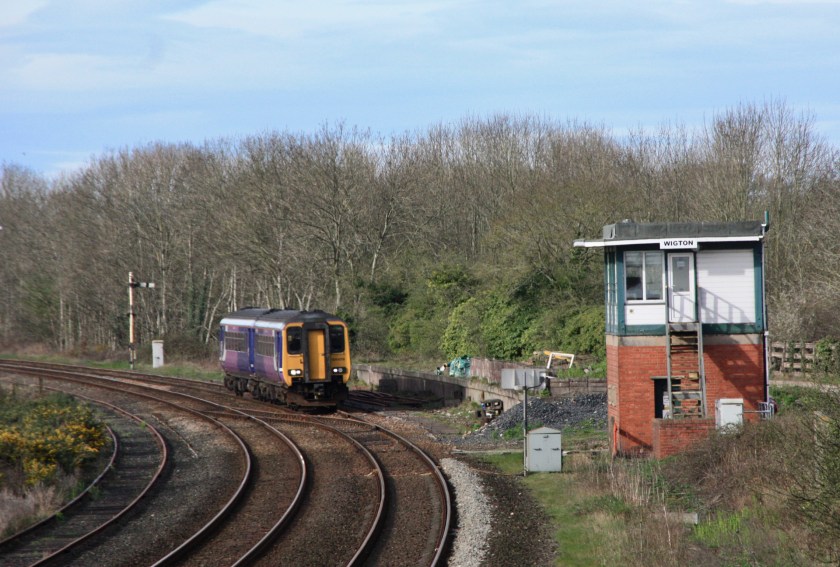
Over the course of the three hours it takes a through train to travel through a total of 30 stations from Wigton to Arnside (though many journeys involve a change at Barrow) you will pass no less than 17 signal boxes, many of them Listed, as well as two notable gate boxes, that all control at least some semaphore signals.
Besides its signalling interest, stretches of these two lines are among the most scenic anywhere in England, with views of the majestic Lake District to the east, some wonderful views of the Irish Sea coast to the west as you roll through places like Seascale, and of Morecambe Bay at places like Grange-over-Sands, as well at delightfully unspoiled stations such as St. Bees and Ulverston.
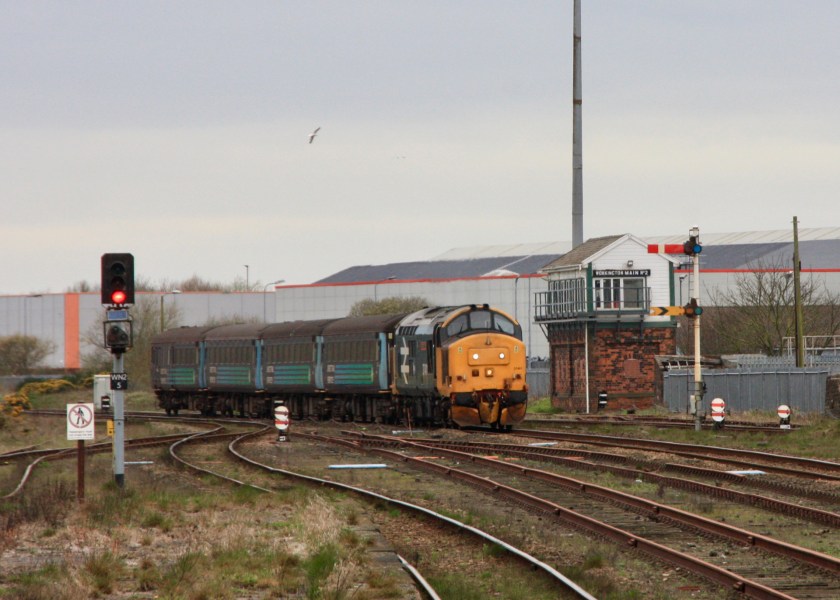
My epic day out begins aboard the 08.30 Avanti service from Euston to Glasgow Central, whose punctual 11.49 arrival at Carlisle gives plenty of time to board the 12.10 to Barrow, which is formed of unit 156449, the ageing two-car Class 156s and Class 150/3 units being the only class of rolling stock permitted to work the northern end of the Cumbrian Coast Line.
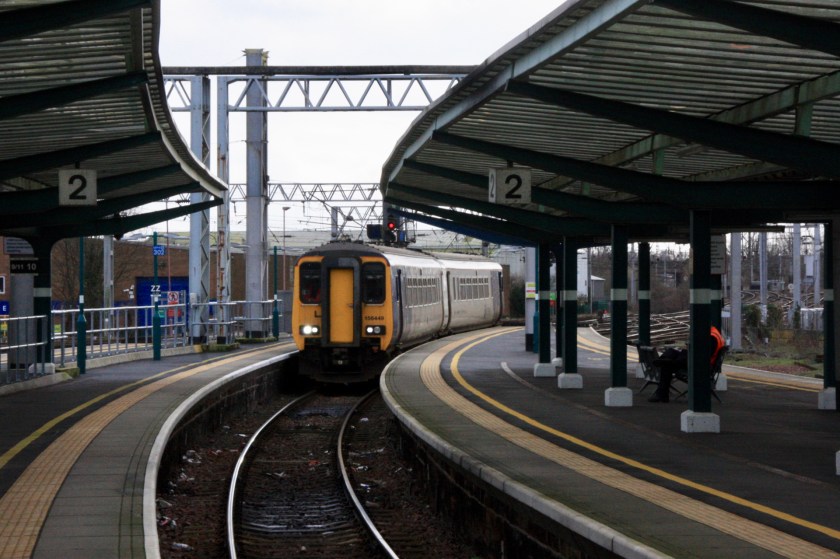
Less than 20 minutes after departing Carlisle comes the first sight of semaphore signals at Wigton, where the route’s most modern signal box (British Rail, LMR 1957) stands on the west side of the line some 300 yards south of the station. Its three semaphore arms comprise an up home signal (WN37) just beyond the end of the southbound platform along with a down home (WN2) and the only working distant I have yet to photograph on this route (WN1).

Next up in terms of signalling interest is Workington which, along with Bedlington (for now), Shrewsbury and Worcester is one of the only places on our rail network to boast more than one surviving signal box. First up, and at the north end of the up platform, comes Workington No.3, with five remaining semaphore arms, including down home signal WN3/23 opposite the signal box.
On the west side of the line to the south of the station stands Workington No. 2 box, though its surviving mechanical signalling is limited to numerous ground level shunting discs and signal WM2/8 which stands in front of the box above a fixed distant signal and protects exit from sidings west of the station.

Getting decent photos of the signalling when you are spending most of the day on the train is far from easy, so apart from a few snatched shots and those from an hour between trains at Barrow, I have picked a few favourite shots from earlier visits to the Cumbrian Coast, including some from my first visit (April 2017) when an added attraction was Class 37 haulage of certain passenger workings.
One interesting and recent change on the Cumbrian Coast Line has been the virtual elimination of request stops, with stations including Drigg, Bootle, Silecroft and Kirkby-in-Furness now all being mandatory calls and the only remaining request stops being Nethertown and Braystones, between St. Bees and Sellafield.
Less than 20 minutes on from Workington comes the next outpost of mechanical signalling interest at Whitehaven, one of the major stops on the route and terminating place for some services from Carlisle.
Bransty Signal Box has just four remaining semaphores on its 60-lever frame, all in the down (northbound direction). Three are visible from the station, with the fourth being down outer home BY60 that stands at the south end of the 1,322-yard Whitehaven Tunnel and can be seen from the station platform at Corkickle, as seen above.

This tunnel is the start of a 10¾-mile stretch of single track that extends as far south as Sellafield and is broken by a passing loop at delightful St. Bees. Here a Grade II Listed chalet-style signal box (Furness Railway, 1891) stands to the west of the line at the north end of the down platform, controlling level crossing barriers, and with all its five semaphores in view from the station footbridge.
Desolate Sellafield is an interesting railway location, where the driver of a southbound train will surrender the key token from St. Bees to a signaller standing on a metal platform outside the 1918 Furness Railway signal box. There are numerous semaphores both north and south of the station, including those controlling access to the nuclear site.

Another charming location and Listed box is Bootle, just 15 minutes on from Sellafield, whose 1871-vintage signal box is one of the oldest in Britain, All of its four stop signals can be seen from the station platforms, including an up section signal some 400 yards to the south, where a white square has been painted as a sighting board onto the brick over-bridge behind it.

From a signalling perspective the most interesting section of the Cumbrian Coast route – and a must visit location – is the three miles that separate the next stop (Silecroft) from the town of Millom, as this takes you past a handful of working distant signals, one controlled by Silecroft then two each by the gate boxes at Limestone Hall and Kirksanton, and finally the Millom up distant signal (M3).
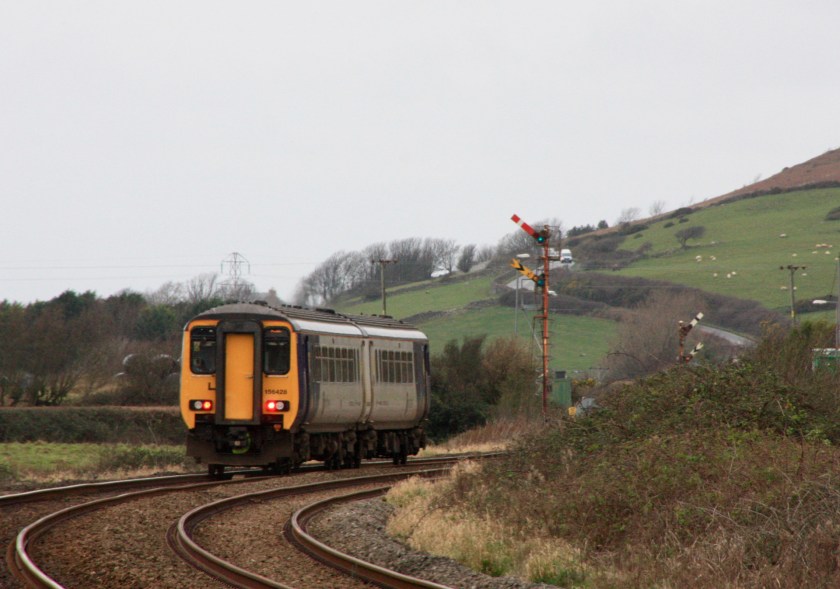
While signal M3 is routinely pulled off for passing trains that is alas not true of down distant M28, which is only pulled off for trains such as nuclear flasks for Sellafield that are not calling at the station. There are a number of places where this happens, including Arnside on the Furness Line, as well as Heckington and Uttoxeter.
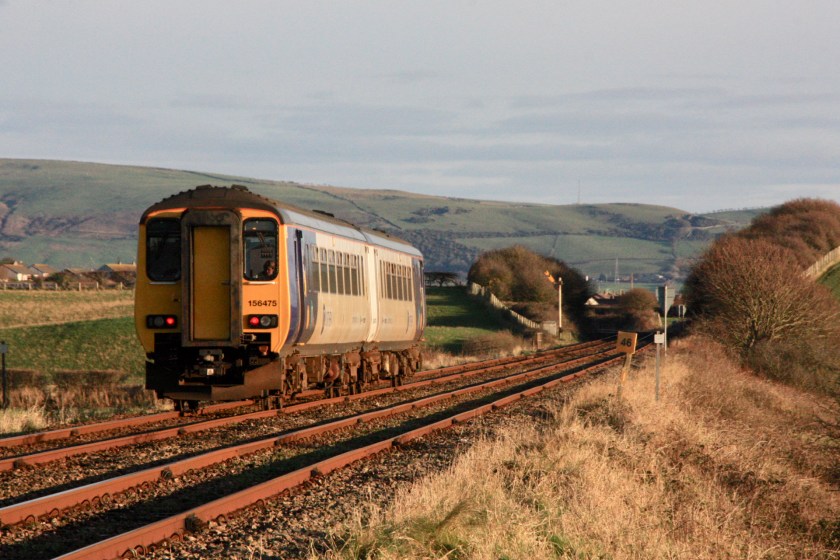
But two more working distant signals that are routinely pulled off are those at another delightful spot along this route, Foxfield. They are among seven semaphores controlled from a wooden 1879 Furness Railway signal box, which stands at the north end of an island platform, with the remaining quintet all in view from the station.
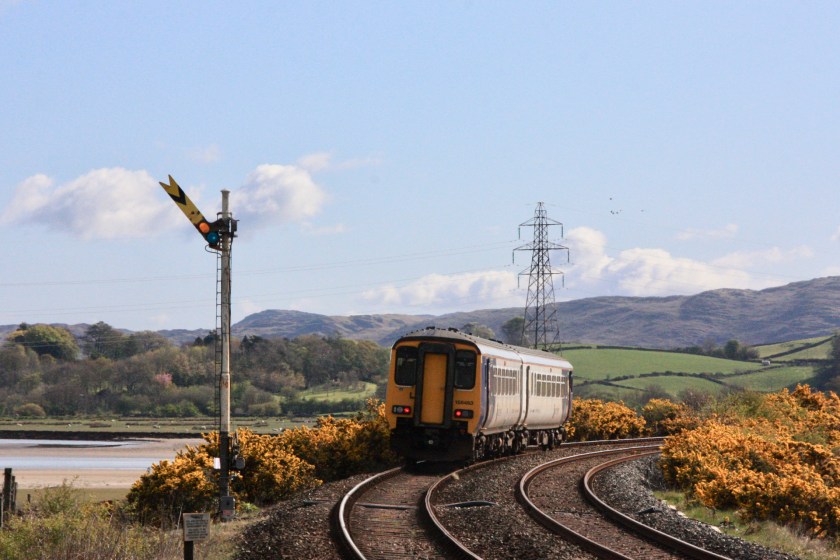
One final station before Barrow with semaphore signalling is Askam, pictured below, where a Grade II-listed chalet-style station building stands alongside an equally attractive Furness Railway signal box (1895).
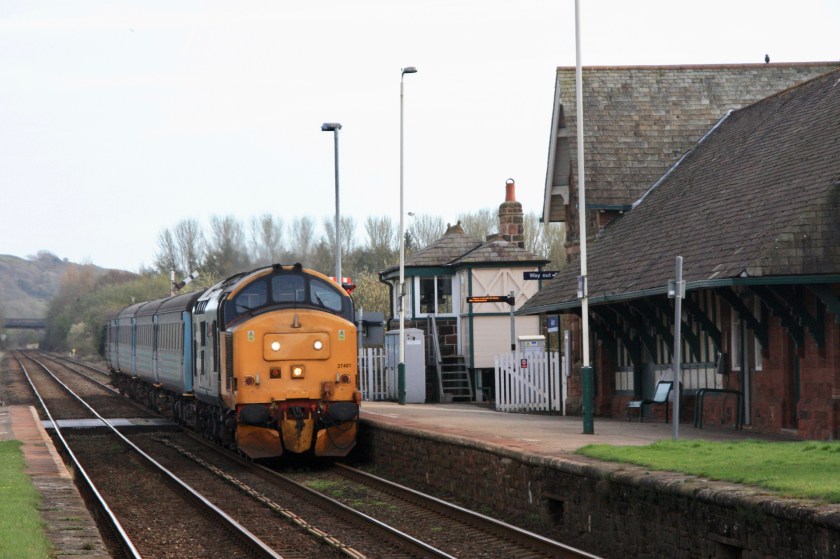
Like Bootle and Millom, there are four semaphores visible from the platforms, with a down home 100 yards south of the signal box and level crossing and an up starter at the platform end. North of the station there is an up home signal, with a down section signal some distance further out.

Barrow-in-Furness is the most important station on the Cumbrian Coast Line, and the place where it continues east towards Lancaster as the Furness Line. Here a 1907 Furness Railway signal box stands to the west of platforms 2 & 3 of this three-platform station, with its 67-lever frame controlling nine main semaphore signals, and four subsidiary shunting arms controlling movements into the large depot here.
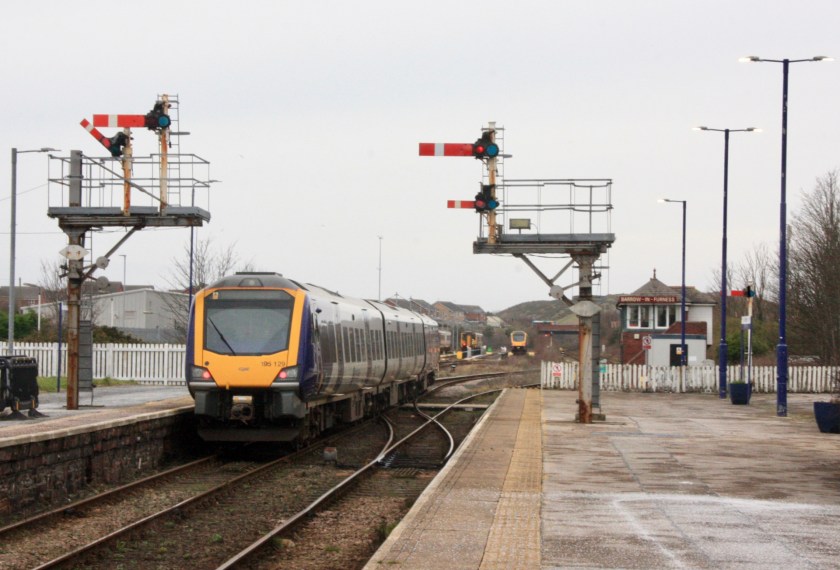
After an hour’s break in Barrow, the second leg of my £2.00 tour takes me on towards Lancaster at 15.50, with three final semaphore-signalled locations to savour, as well as two sizeable viaducts to cross and along the way some spectacular views across Morecambe Bay and the looming mass of Heysham Nuclear Power Station.

First up of this final trio is Ulverston, birth-place of comedian Stan Laurel, where an attractive Grade II listed station has a similar platform arrangement to Yeovil Pen Mill, with an island platform where up trains stop in platform 3, with the unnumbered platform 2 not used, and the doors of down trains only opened on platform 1.
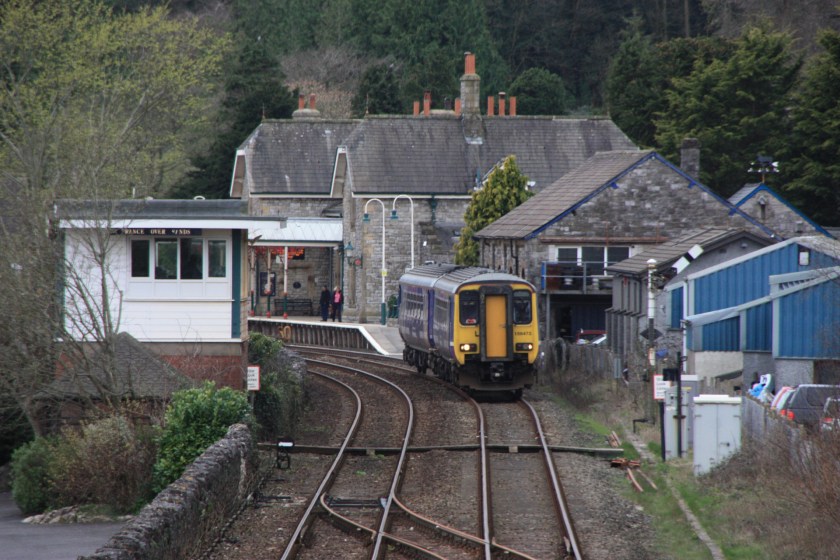
As I discovered on my previous visit, the finest view of Ulverston’s 1900-vintage Furness Railway signal box and its semaphores is to be found after a 15-minute walk west from the station to a road (A590) over-bridge, from where there is a great view looking back towards the signal box and staton.
Continuing on for another ten miles brings the train to the classy resort of Grange-over-Sands, where another Grade II-Listed station makes a marked contrast to its signal box, which is just one year older than Wigton, being a British Rail (LMR) design from 1956, which stands just beyond the station on the south side of the line.
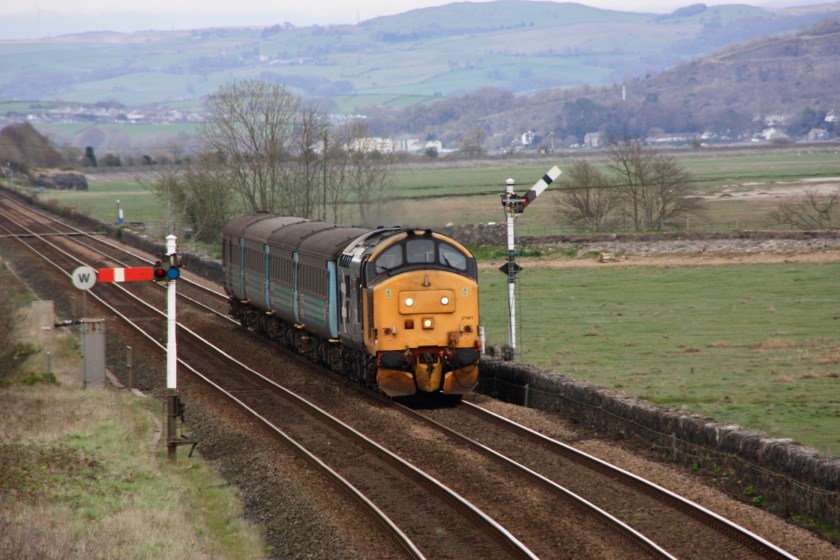
Finally, the last outpost of semaphores on the Furness Line is Arnside, just 3¼ miles beyond Grange-over-Sands, and reached by train after passing over the 50-span Kent Viaduct across the River Kent estuary. Arnside Signal Box is another Furness Railway design (1897) and also enjoys a Grade II-Listing.
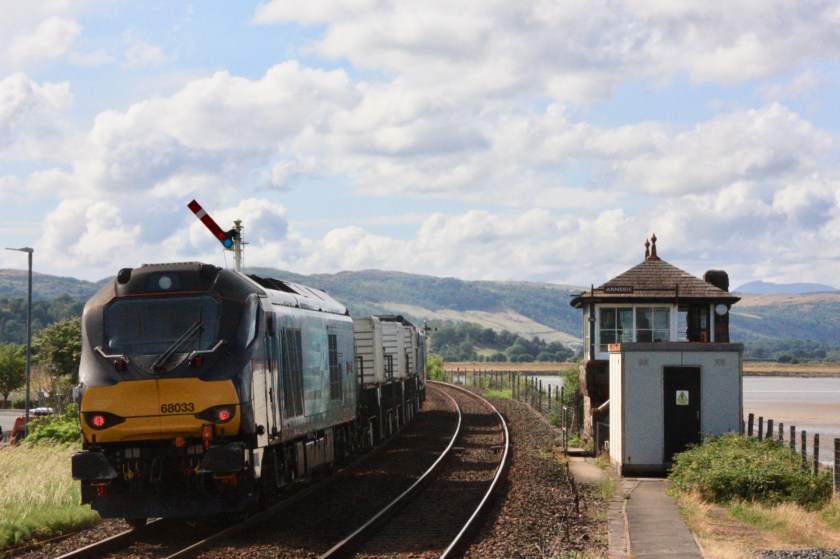
The box here controls five semaphores from its 35-lever frame, of which three can be seen from the station platforms, comprising an up starter AE25 at the eastern end of the station, a down home (AE17) opposite the signal box and an up home (AE26) at the end of the viaduct. Out of sight beyond, but visible from the nearby waterfront, are a down section signal AE18 (pictured below) and up distant AE28 at the far end of the viaduct.
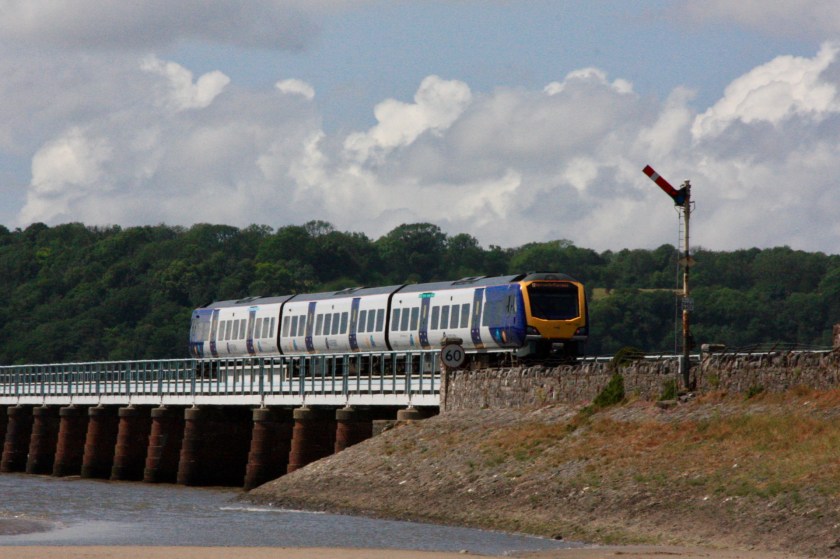
Reaching Lancaster spot on time at 16.50 after my mechanically-signalled 120-mile circumnavigation of the Cumbrian Coast, it was rather ironic that my return to London Euston was on an Avanti service from Glasgow that was running 49 minutes late “due to a fault with the signalling system” !
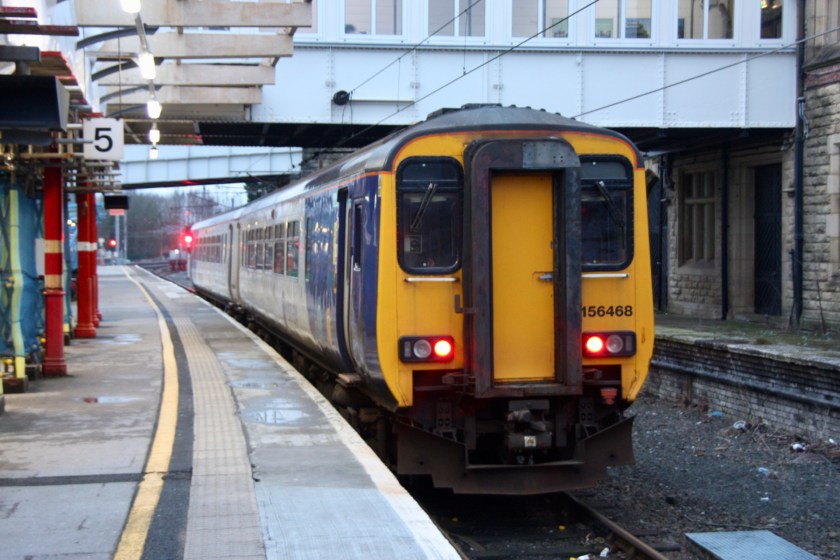

You must be logged in to post a comment.